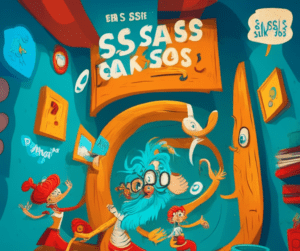How To Cultivate A Winning Dynamic With Team-Building Ideas
The modern workforce demands more than just occasional perks to feel truly productive, engaged, and satisfied in their workplace. Companies need to prioritize improving the work environment to foster employee satisfaction and success. A crucial aspect of creating a non-toxic and collaborative workplace is establishing healthy team dynamics. Recognizing the value of nurturing strong team dynamics is the first step towards achieving this goal. If you’re convinced of its importance, here are five team-building ideas to help your company cultivate a collaborative environment through its Learning and Development (L&D) strategy:
The Value Of Implementing Team-Building Ideas In L&D Initiatives
A collaborative work environment offers numerous benefits to organizations, regardless of their size or industry. By fostering healthy interpersonal dynamics, companies can bring together teams with diverse backgrounds to effectively tackle complex challenges that arise in their day-to-day operations. A tightly knit and high-functioning team is capable of performing exceptionally well, regardless of external circumstances, as they leverage their combined expertise and diverse skill sets.
Implementing team-building ideas within an organization can lead to transformative outcomes and innovative solutions. Within a team, the sharing of knowledge, exchange of industry-specific insights, and inclusion of diverse perspectives facilitate individual and collective growth. Additionally, teams that collaborate closely can quickly assess potential risks and obstacles, respond to emergency situations, and develop cohesive action plans. This level of synergy among team members enables swift and effective decision-making.

Furthermore, close collaboration cultivates and enhances a variety of behavioral and interpersonal skills that are highly sought after in many industries today. Skills such as effective communication, active listening, conflict resolution, and teamwork are honed through collaborative work. Employees who possess these skills can contribute significantly to the success of their teams and organizations.
The Necessary Components To Ensure Healthy Team Dynamics
Before we delve into our recommended team-building ideas, let’s analyze the essential attributes that contribute to the success of any team:
1. Trust: Trust is the foundation of effective teamwork. When team members trust each other, they can collaborate openly, share ideas, and rely on one another’s expertise. Building trust requires fostering an environment of transparency, honesty, and good intentions.
2. Accountability: A high-performing team embraces accountability. Team members take responsibility for their actions, deliver on their commitments, and hold themselves and others accountable for achieving shared goals. Accountability cultivates a sense of ownership and ensures that everyone is working towards the team’s success.
3. Respect: A team that values respect creates a positive and inclusive work environment. Encourage your employees to treat one another with respect, both in their words and actions. Upholding a code of professional conduct and promoting respectful behavior enhances collaboration and team cohesion.
4. Communication: Effective communication is vital for team success. Encourage open and transparent communication channels where team members can share ideas, provide feedback, and discuss challenges. Clear and timely communication prevents misunderstandings, facilitates problem-solving, and promotes unity within the team.
5. Conflict resolution mindset: Conflict is a natural part of any team environment. Encourage your team to approach conflicts with a constructive mindset. Provide training on conflict resolution techniques, promote active listening, and create a safe space for open dialogue. Addressing conflicts promptly and respectfully allows teams to find resolutions and maintain positive working relationships.
6. Commitment: Successful teams are committed to their goals and to each other. Encourage your employees to be dedicated and motivated to achieve collective milestones. Foster a culture that encourages perseverance in the face of challenges and uncertainty. A committed team is more likely to overcome obstacles and achieve success.
By nurturing these attributes within your team, you create a solid foundation for building healthy team dynamics. These characteristics lay the groundwork for effective collaboration, innovation, and a positive work environment.
5 Team-Building Ideas To Incorporate Into Your L&D Initiative

Here are some team-building ideas that target each attribute and promote a stronger team dynamic:
1. Trust-Building Activities:
– Team-building exercises that encourage collaboration and problem-solving.
– Trust falls or blindfolded activities that require team members to rely on each other.
– Sharing personal stories or experiences to foster understanding and empathy.
2. Accountability Practices:
– Clearly define roles, responsibilities, and expectations for each team member.
– Regularly track progress towards goals and celebrate achievements.
– Conduct regular performance evaluations and provide constructive feedback.
3. Respect-Enhancing Initiatives:
– Organize diversity and inclusion workshops or training sessions.
– Encourage open discussions about different perspectives and experiences.
– Establish a zero-tolerance policy for disrespectful behavior.
4. Effective Communication Strategies:
– Conduct team-building exercises that focus on active listening and effective communication skills.
– Implement regular team meetings to discuss progress, challenges, and ideas.
– Use collaborative tools and platforms to facilitate communication and information sharing.
5. Conflict Resolution Workshops:
– Provide conflict resolution training to equip team members with effective techniques.
– Encourage open dialogue and create a safe space for addressing conflicts.
– Mediation sessions facilitated by trained professionals, if needed.
6. Commitment-Building Initiatives:
– Establish shared team goals and objectives that align with the organization’s mission.
– Recognize and reward team members’ commitment and dedication.
– Foster a sense of purpose and encourage personal development opportunities.
Remember, these ideas should be tailored to the specific needs and characteristics of your organization. Regularly assess the effectiveness of the team-building initiatives and make adjustments as needed. Building a strong team dynamic takes time and effort, but the benefits are well worth it in terms of increased productivity, engagement, and overall success.
1. Volunteer Programs
Volunteering initiatives can indeed be a valuable addition to a company’s L&D and CSR strategy. Here are some points to consider when implementing volunteering programs to foster team building and engagement:
1. Identify Relevant Causes: Research and select causes or organizations that align with your company’s values and mission. This will create a sense of purpose and passion among employees when contributing their time and skills.
2. Encourage Employee Participation: Make volunteering opportunities easily accessible and offer incentives or rewards for participation. Recognize and celebrate the efforts of employees who volunteer their time and skills.
3. Team-Based Volunteering: Organize group volunteering activities that require collaboration and teamwork. This can involve projects such as community clean-ups, charity events, or assisting local schools or nonprofits.
4. Skill-Based Volunteering: Leverage the unique skills and expertise of your employees by matching them with volunteering opportunities that utilize their professional knowledge. This can include offering pro bono consulting services or mentoring programs.
5. Reflect on Experiences: Provide opportunities for employees to reflect on their volunteering experiences and share their insights with their team members. This can be done through team meetings, newsletters, or internal communication channels.
6. Measure Impact: Track and measure the impact of your volunteering initiatives, both on the community and within the organization. This will help demonstrate the value and positive outcomes of employee involvement.
7. Promote Continuous Engagement: Encourage ongoing engagement with the chosen causes by offering recurring volunteering opportunities or establishing long-term partnerships with organizations. This allows employees to develop a deeper connection to the cause and fosters sustained team building.
Remember, the success of volunteering initiatives relies on fostering a supportive environment that values employee engagement, promotes teamwork, and encourages personal growth. By incorporating volunteering into your L&D and CSR strategies, you can create a culture of social responsibility and collaboration within your organization.
2. Conflict Resolution Meetings
Conflicts are an inevitable part of any work environment, and addressing them effectively is crucial for maintaining a healthy and productive atmosphere. Here are some key steps to successfully initiate conflict resolution meetings in your L&D practices:
1. Identify Individual Dynamics: When conflicts arise between two employees, it’s important to understand the underlying issues. Take the time to listen to each individual’s perspective and gather information about their personal arguments or professional misalignments.
2. Analyze Team Dynamics: Examine the dynamics within the team or department where the conflict exists. Look for any factors that may hinder collaboration, such as communication gaps, role ambiguity, or conflicting priorities. Addressing these team-level dynamics is essential to creating a more harmonious and cooperative environment.
3. Address Company-wide Issues: Consider conflicts that affect the entire organization. This could include issues related to company culture, organizational structure, or conflicting goals. By understanding and addressing these broader conflicts, you can create a more cohesive and aligned work environment.
4. Appoint a Neutral Moderator: To ensure a fair and balanced conflict resolution process, designate someone to act as a neutral moderator. This person should facilitate the discussions, ensuring that everyone has an opportunity to express their viewpoints and that the conversation remains constructive and respectful. Outsourcing this role can bring in an unbiased perspective.
5. Encourage Solution-Oriented Discussions: Emphasize that the purpose of conflict resolution meetings is to find solutions rather than dwelling on the conflict itself. Create an environment where transparency and respect are valued, allowing participants to express their concerns and work together to find resolutions.
6. Provide Training and Support: Offer training and resources on effective communication, conflict management, and emotional intelligence to empower employees to navigate conflicts more effectively. This can be integrated into your L&D programs to foster a culture of constructive conflict resolution.
7. Follow-up and Monitor Progress: After conflict resolution meetings, follow up with participants to ensure that agreements and solutions are implemented. Monitor the progress to identify any recurring issues or the need for additional support.
By proactively addressing conflicts through conflict resolution meetings, you can promote a more harmonious work environment, enhance collaboration, and foster a culture of open communication and problem-solving within your organization.
3. Activity Days
Implementing activity days can have numerous benefits for both the organization and the employees. Here are some key advantages of organizing off-premises activity days:
1. Break from Routine: Activity days provide a refreshing break from the everyday work routine. By stepping away from the office environment, employees can recharge and rejuvenate, leading to increased motivation and productivity upon their return.
2. Social Interaction: Activity days encourage employees to interact with one another in a more casual setting. This allows them to get to know each other on a personal level, building stronger relationships and fostering a sense of camaraderie within the team.
3. Team Bonding: Engaging in activities outside of work can strengthen team dynamics and improve collaboration. Employees have the opportunity to work together on shared goals, face challenges, and celebrate successes, which can enhance teamwork and cooperation back in the workplace.
4. Improved Communication: Activity days provide a relaxed atmosphere where open communication can flourish. Employees may feel more comfortable expressing their ideas, concerns, and feedback, leading to better communication and problem-solving within the team.
5. Conflict Resolution: Stronger bonds and open communication developed during activity days can help resolve conflicts more effectively. When employees have a better understanding of their colleagues’ perspectives and build trust, they are more likely to find mutually agreeable solutions to conflicts that may arise in the workplace.
To ensure that employees can fully enjoy their activity day and get to know each other personally, it’s important to accommodate everyone’s schedule by providing a day with no work commitments. Additionally, it’s essential to promote a healthy work-life balance and encourage delegation of tasks to prevent burnout among staff members. Regular reminders and support for workload management can help employees allocate their responsibilities efficiently and avoid excessive stress.
Overall, organizing activity days off-premises can foster social interaction, team bonding, improved communication, and conflict resolution, contributing to a positive work environment and enhanced employee satisfaction.
4. Group Projects
Keeping up with industry trends is crucial for staying competitive and driving innovation. Here are some ideas to leverage group projects and presentations to help your team stay informed and up-to-date:
1. Identify Relevant Events: Research conferences, workshops, and seminars related to your industry. Encourage your team members to attend these events and share their insights and learnings with the rest of the team.
2. Internal Knowledge Sharing: Organize internal presentations where team members can share their expertise on emerging trends or niche-specific innovations. Assign topics of interest or allow teams to propose their own research topics to ensure relevance and engagement.
3. Collaborative Research Projects: Form teams to conduct research on specific industry trends or advancements. Each team can be responsible for gathering information, analyzing data, and presenting their findings to the rest of the organization.
4. Expo or Showcase: Plan an expo or showcase event where teams can present their research projects, innovations, or predictions for the future of your industry. This can be an opportunity to invite clients or industry experts to engage with your team’s work and foster collaboration.
5. Foster Collaboration: Encourage collaboration and interaction among team members throughout the project. Provide opportunities for brainstorming, feedback sessions, and cross-team collaboration to enhance knowledge exchange and innovative thinking.
6. Supportive Leadership: Leaders can delegate research topics or provide guidance to ensure alignment with business goals. They can also recognize and reward outstanding contributions to motivate employees to actively participate in these initiatives.
By implementing group projects and presentations, your teams can collaborate, interact, and achieve their targets while staying informed about the latest industry trends. This approach not only fills knowledge gaps but also cultivates a culture of collaboration, camaraderie, and solution-oriented thinking. With proper structure and support, these initiatives can contribute to your company’s learning and development goals while fostering innovation within your organization.
5. Brainstorming Sessions
Brainstorming sessions are an effective way to leverage the collective skills, expertise, and knowledge of team members to generate innovative ideas and drive positive change within your organization. Here are some key benefits and considerations for conducting brainstorming sessions:
1. Encouraging Collaboration: Brainstorming sessions create a collaborative environment where team members can contribute ideas, share insights, and build upon each other’s thoughts. It fosters a sense of teamwork and encourages diverse perspectives.
2. Promoting Innovation: By providing a platform for open and creative thinking, brainstorming sessions can generate fresh and innovative ideas. The absence of a “wrong answer” mentality allows participants to explore different possibilities and think outside the box.
3. Team Building: Brainstorming sessions help team members get to know each other better and build stronger relationships. The informal and relaxed setting allows for casual interactions, promoting camaraderie and enhancing communication within the team.
4. Problem Solving: These sessions provide an opportunity to address challenges and find solutions collectively. The collaborative nature of brainstorming allows for the pooling of knowledge and resources to overcome obstacles and find the best course of action.
5. Structured or Unstructured: Brainstorming sessions can be structured, with a specific topic or problem to focus on, or unstructured, allowing for free-flowing ideas. Both approaches have their merits, and the choice depends on the objectives and preferences of the team.
6. Facilitation and Guidelines: To ensure effective brainstorming, it’s helpful to have a facilitator who encourages participation, maintains focus, and ensures everyone has an opportunity to contribute. Establishing guidelines, such as promoting active listening, deferring judgment, and building on each other’s ideas, helps create a safe and supportive environment for sharing.
7. Follow-up and Action: It’s essential to document the ideas generated during brainstorming sessions and follow up with an evaluation of their feasibility and potential implementation. Assigning action items and tracking progress ensures that the ideas are not left stagnant but are transformed into actionable steps.
By incorporating brainstorming sessions into your team’s activities, you can tap into the collective creativity, knowledge, and problem-solving abilities of your members. These sessions provide an opportunity to foster collaboration, encourage innovation, and strengthen team dynamics, ultimately driving positive change within your organization.
Conclusion
To maximize the benefits of team-building initiatives, it’s important to plan and execute your L&D plan effectively. By designing team-building ideas that are specifically tailored to your employees and the unique needs of your company, you can ensure a healthy and thriving work environment. Cultivating strong group dynamics and actively addressing internal conflicts can foster innovation, creativity, and drive industry-specific change. In today’s competitive market, cohesive and bonded teams are essential for success, and a well-structured team-building training plan can help you achieve that.
To support your team-building efforts, you may consider exploring the top content providers for team-building training. These providers offer a range of resources, tools, and programs designed to enhance team collaboration, communication, and overall effectiveness. By leveraging their expertise, you can provide your teams with the necessary training and development opportunities to succeed.
Remember, the key is to tailor your team-building initiatives to the specific needs and goals of your organization. By investing in the development of your teams and promoting a positive work environment, you can foster a culture of collaboration, engagement, and success.
Related
The Power of Social-Emotional Learning (SEL) for Adults
How To Promote Physical Development In Early Childhood?
Creative Arts And Expression In Early Education
Understanding Early Brain Development: Unleashing the Potential of Young Minds
Early Childhood Education: Laying the Foundation For Lifelong Learning

